
Upasana Paul
A UX Designer with a multidisciplinary background and industry experience, passionate about democratic design. Proficient in user research, crafting engaging narratives and designing experiences that resonate and connect with people.

A UX Designer with a multidisciplinary background and industry experience, passionate about democratic design. Proficient in user research, crafting engaging narratives and designing experiences that resonate and connect with people.
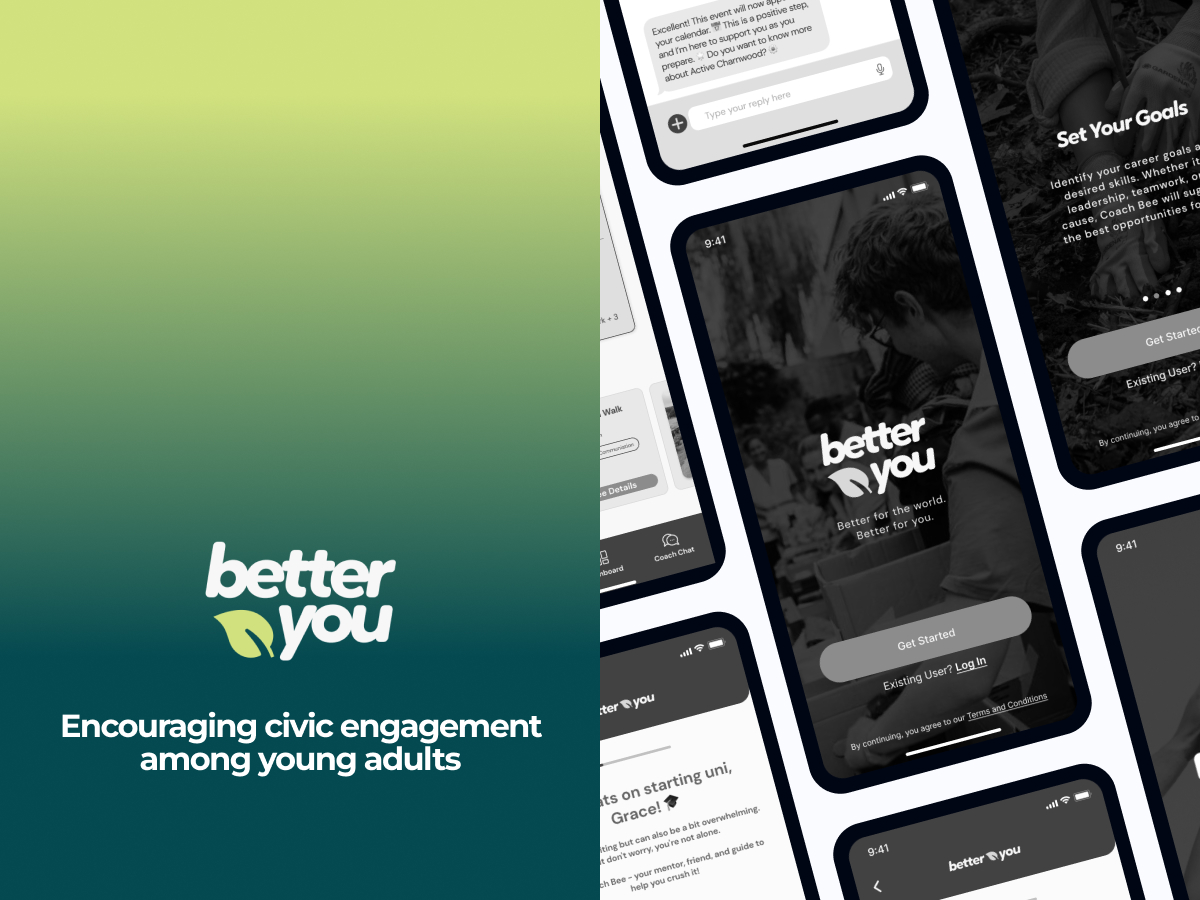
This project was inspired by my previous experience as an urban planner, where I saw how challenging it was to ensure that user voices were genuinely heard and considered in planning processes. This project, and my motivation for pursuing user experience design, stems from a desire to make design more democratic and people-centric.
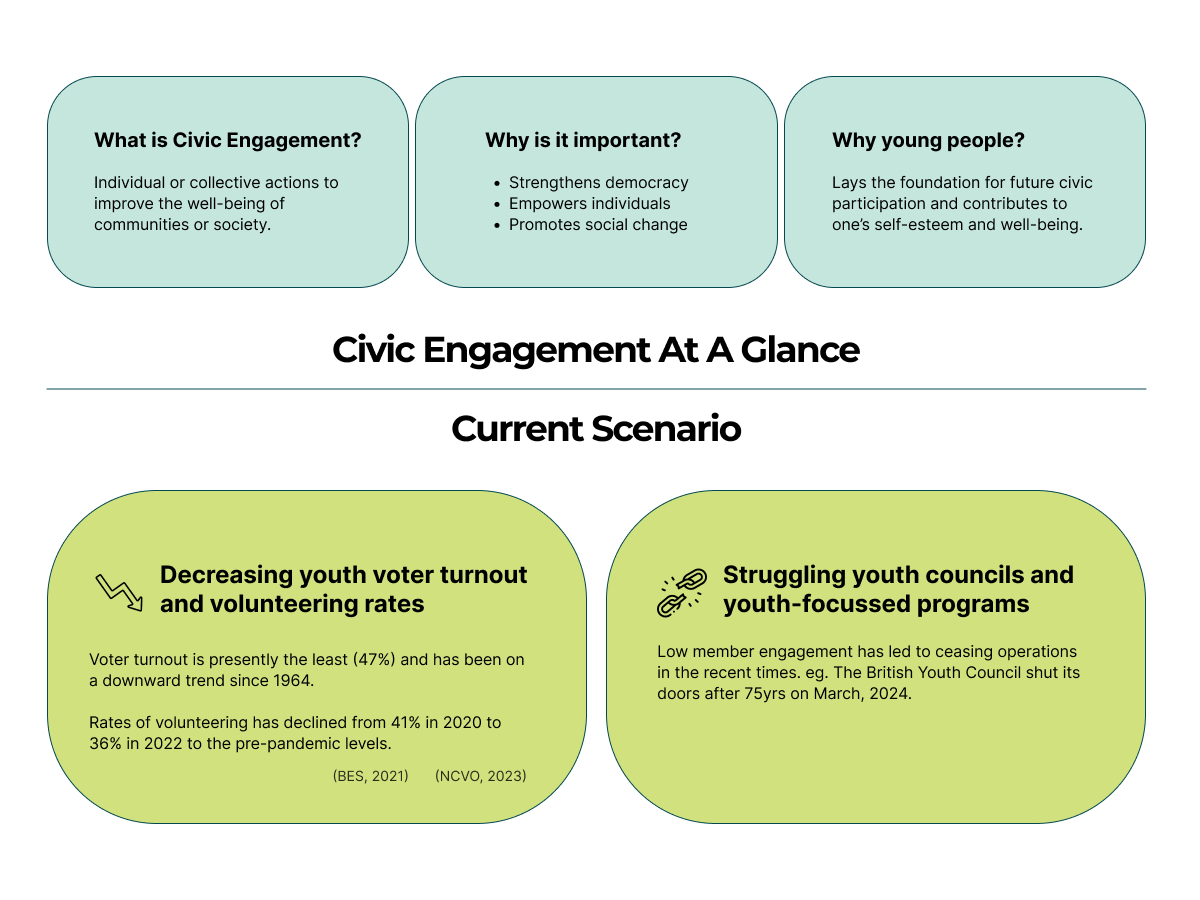
I adapted Frog’s service design diagram to reflect my process, highlighting stakeholder and user involvement. Users were primarily engaged during discover phase, while stakeholders became more involved during the design transition and delivery phases, especially through co-design workshops and prototyping.
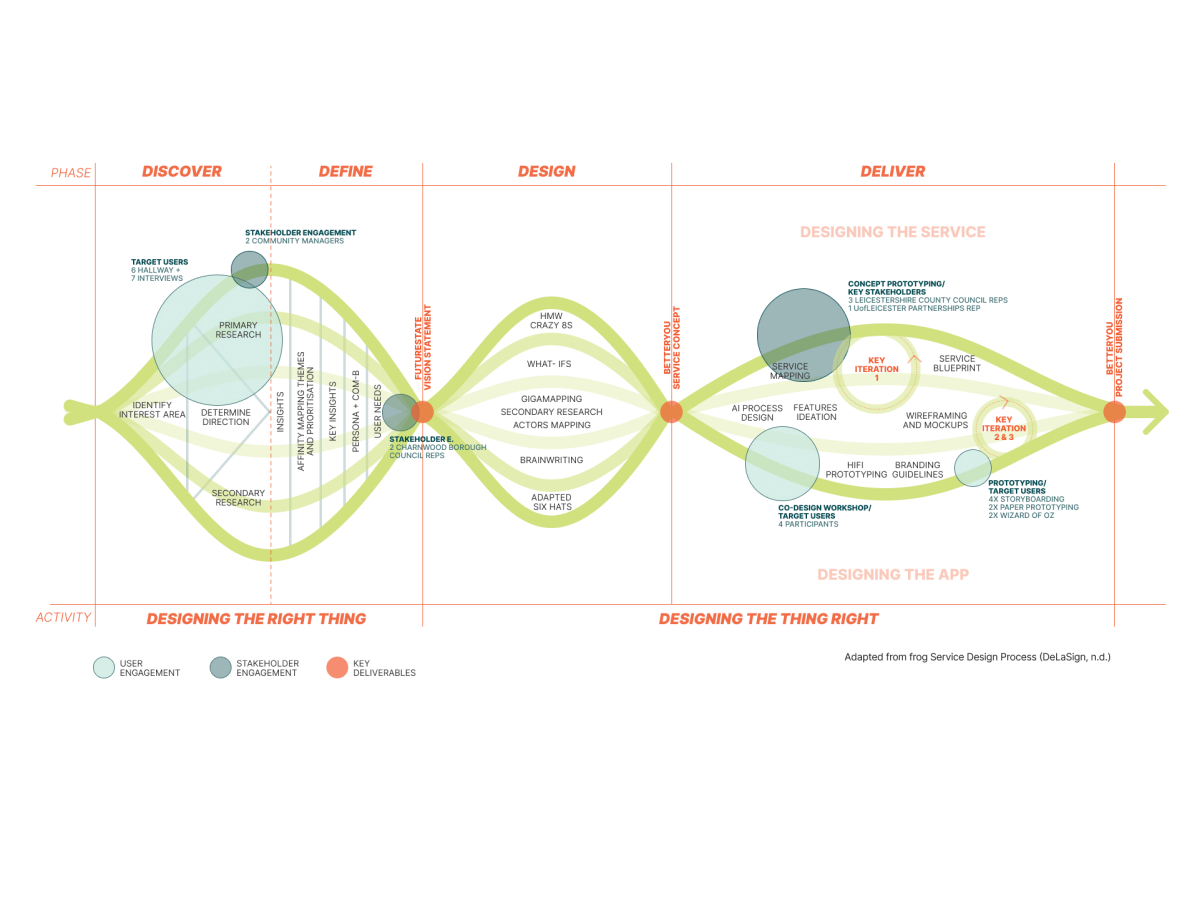
My primary research focused on understanding the barriers, motivations, and engagement levels of 18-24-year-olds in the UK and Ireland. This research was carried out in four phases, involving 6 hallway participants, 6 target users, and 3 experts, leading to the four key insights related to the importance of building a sense of belonging, a need to demonstrate tangible impact and mutual benefits, and the efficacy of word of mouth when it comes to motivating young adults to volunteer.
Additionally, I developed three archetypes (active, passive and disinterested) based on the interviews, which informed my design solution. A COM-B analysis of these archetypes provided further valuable insights, helping shape my design solution.
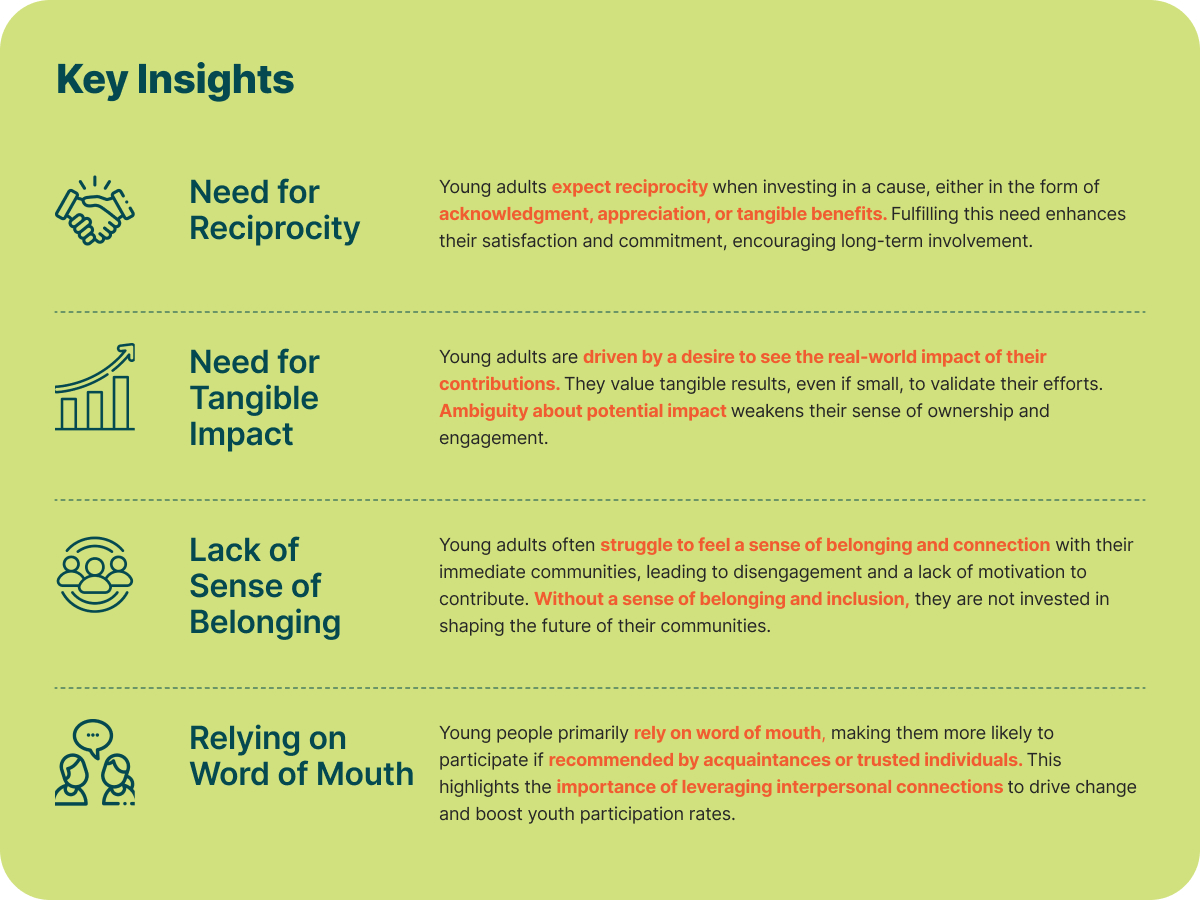

For this project, I applied a futurestate design approach and envisioned the following scenario for the UK in 2040.
It’s 2040 and the youth in the UK are civically engaged and actively championing causes in their communities. Every young person has the opportunity to connect with their neighbourhood, building meaningful relationships and contributing to a vibrant and harmonious national community.
Following the future-state vision statement, I organised three ideation sessions. Alongside, I created a gigamap to process my understanding of the problem space. Actor mapping helped me pinpoint four potential key stakeholders for my design solution – university students, county councils, local non-profits, and universities – each with significant knowledge or influence over youth-related policies.

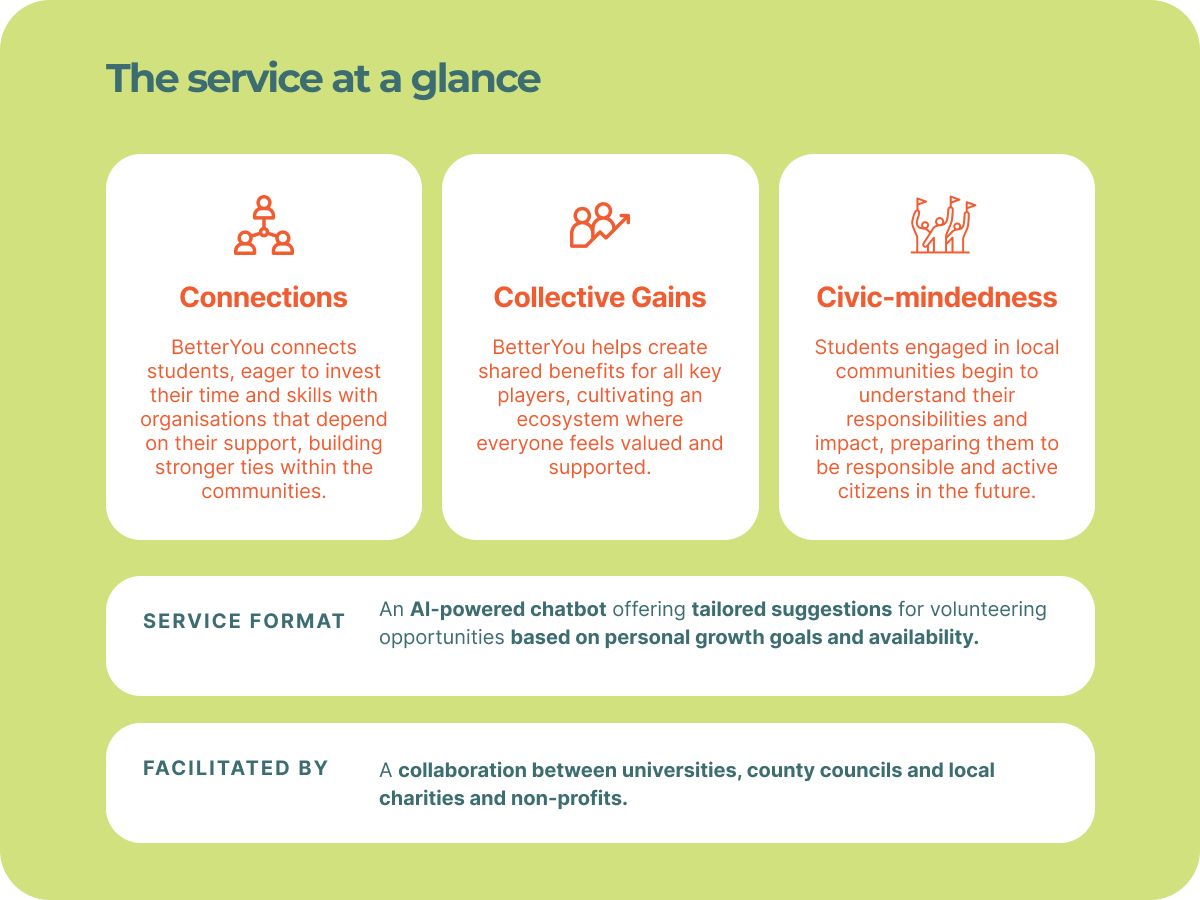
These steps helped me come up with BetterYou – a service aimed at helping university students boost their personal growth by leveraging their self-improvement drive for civic engagement. BetterYou addresses the need for reciprocity by highlighting personal benefits to encourage participation.
Delivered through an AI-powered chatbot, the service uses an assets-based approach to connect key stakeholders, creating shared benefits. Though initially designed for Leicestershire County and Loughborough University, it is scalable to other universities across the UK.
For the BetterYou app, I primarily focused my design efforts on the AI-powered chatbot. The chatbot was designed as a nurturing mentor, supporting students by simplifying the volunteering process and highlighting its benefits. This is done utilising AI and machine learning to personalise experiences, suggest opportunities, and recommend relevant resources.
At this stage, a co-design workshop was conducted with target users to help shape the chatbot’s personality, conversational style, and ideate features and functionalities. This approach enabled me to examine how language influences design experiences, address students’ needs more precisely, and iterate on my design decisions based on their feedback.
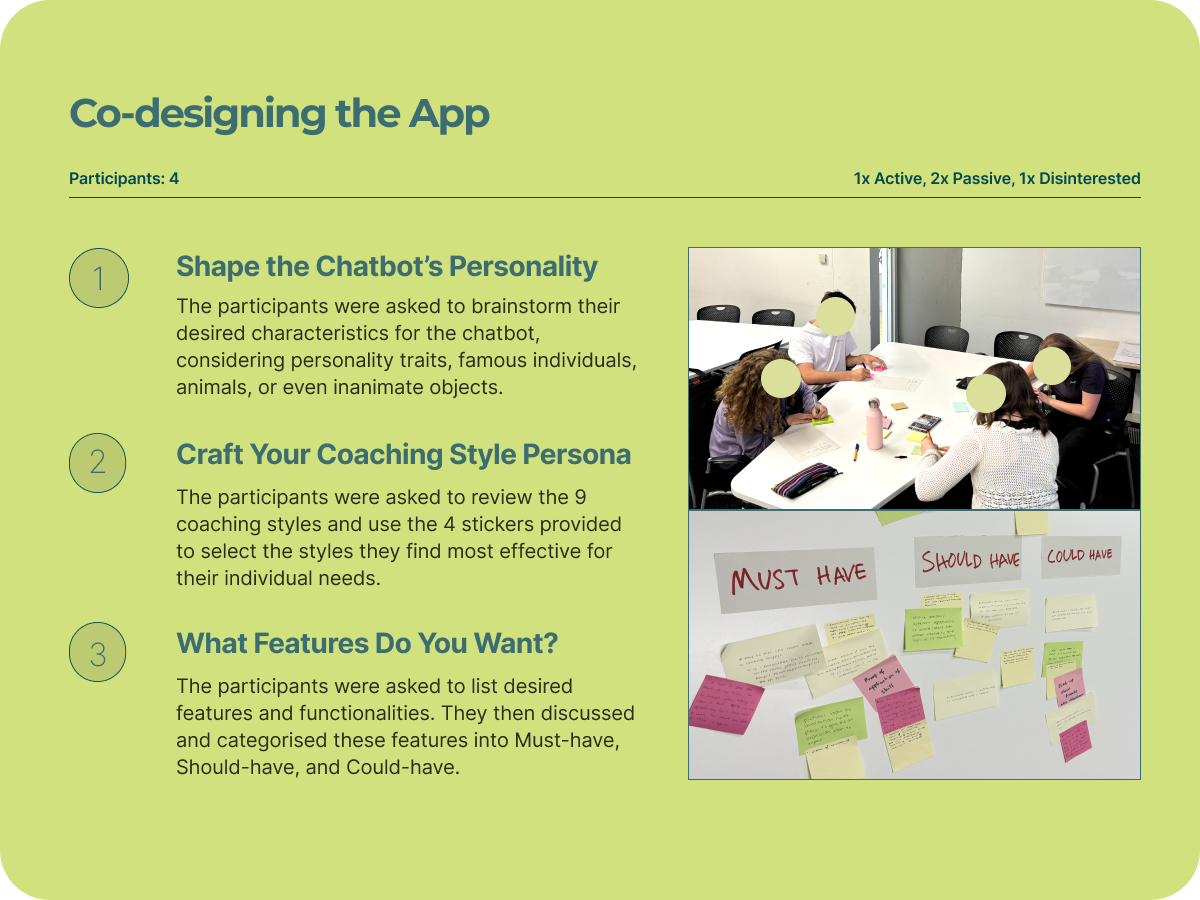
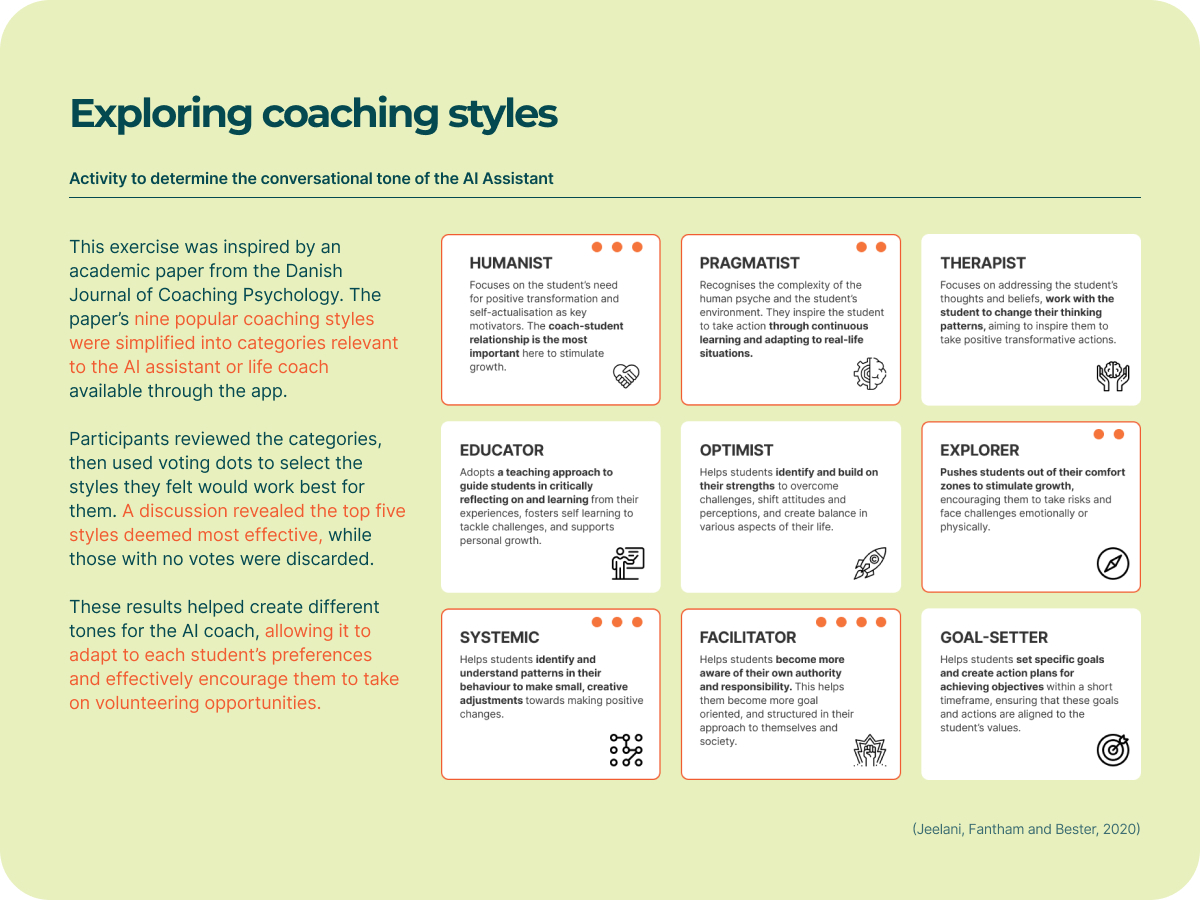
Throughout the process, several prototyping sessions were conducted, including concept testing with community and university representatives, paper prototyping for task flows, and a Wizard of Oz-style A/B testing of two conversational styles. These led to the following key design iterations.
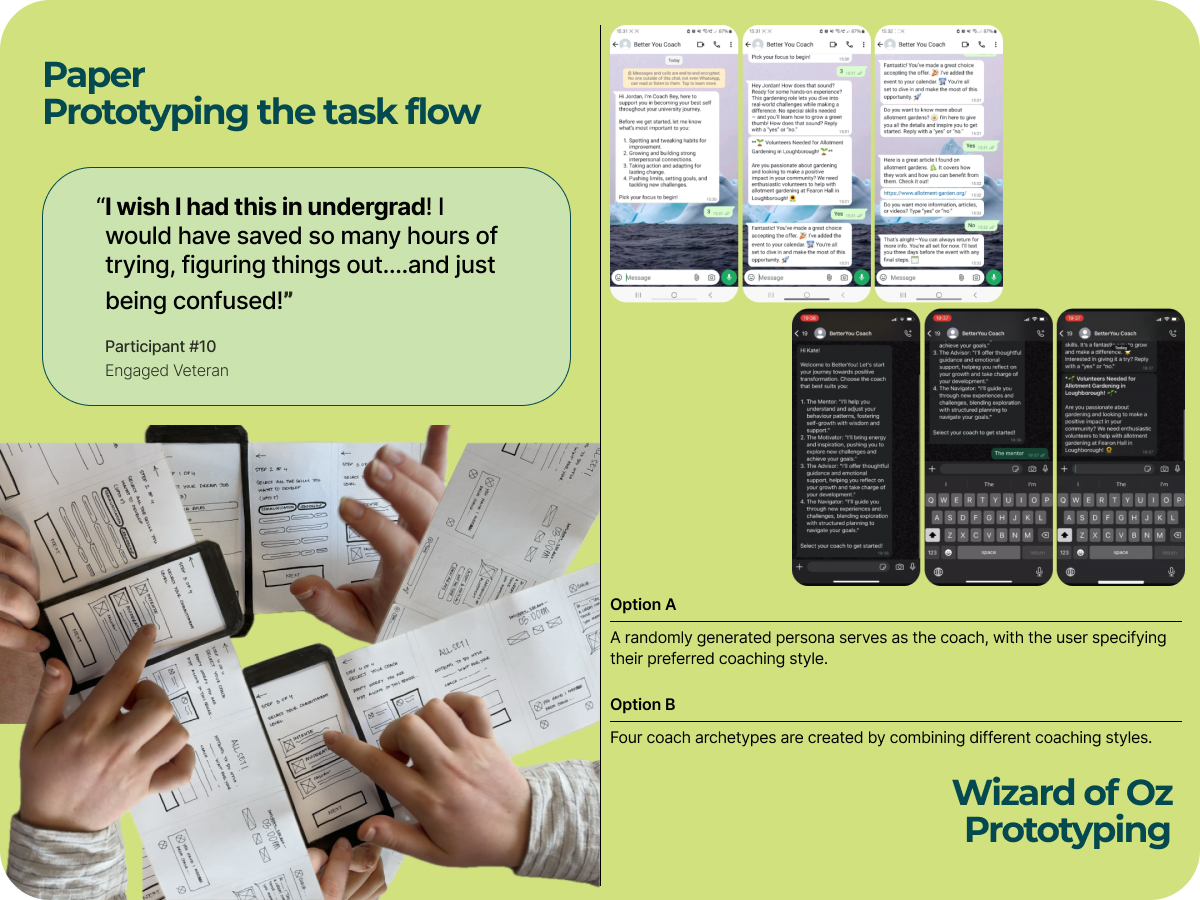
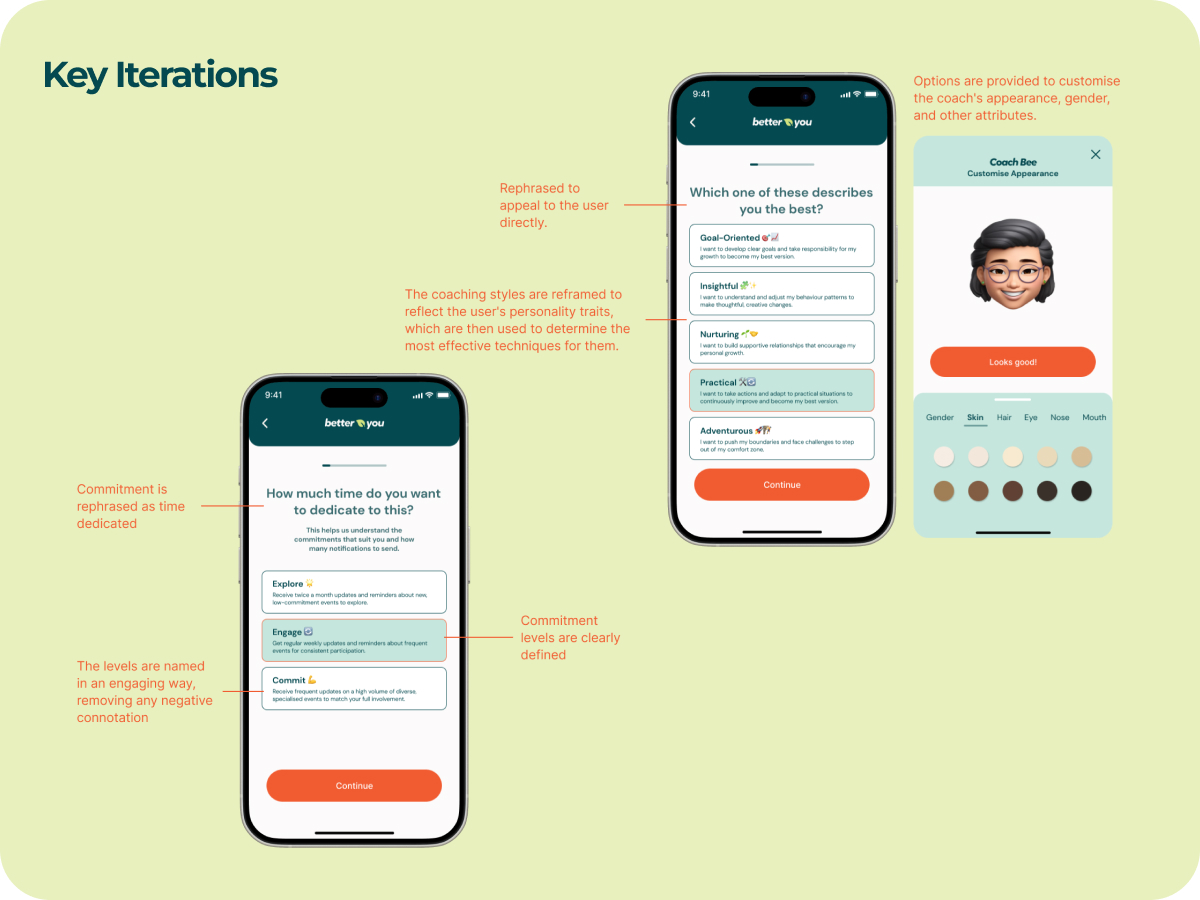
A video was created to showcase the design in context and illustrate how it would support a student starting her university journey.
Thank you for taking the time to review my work. If you’d like to see more samples of my work, please visit my website here.